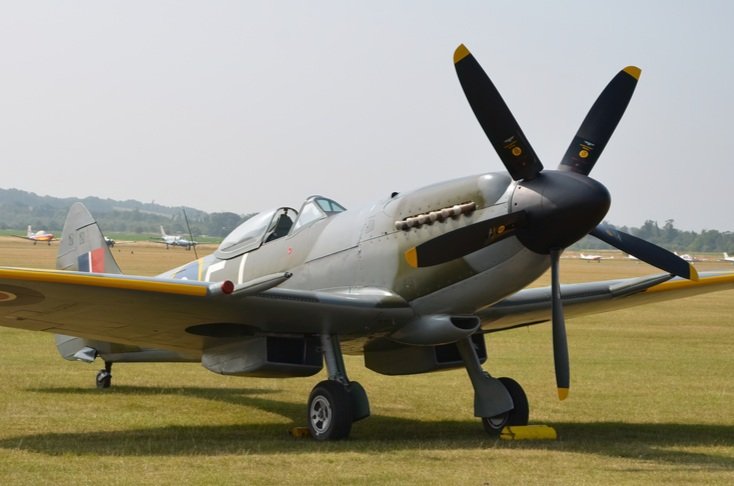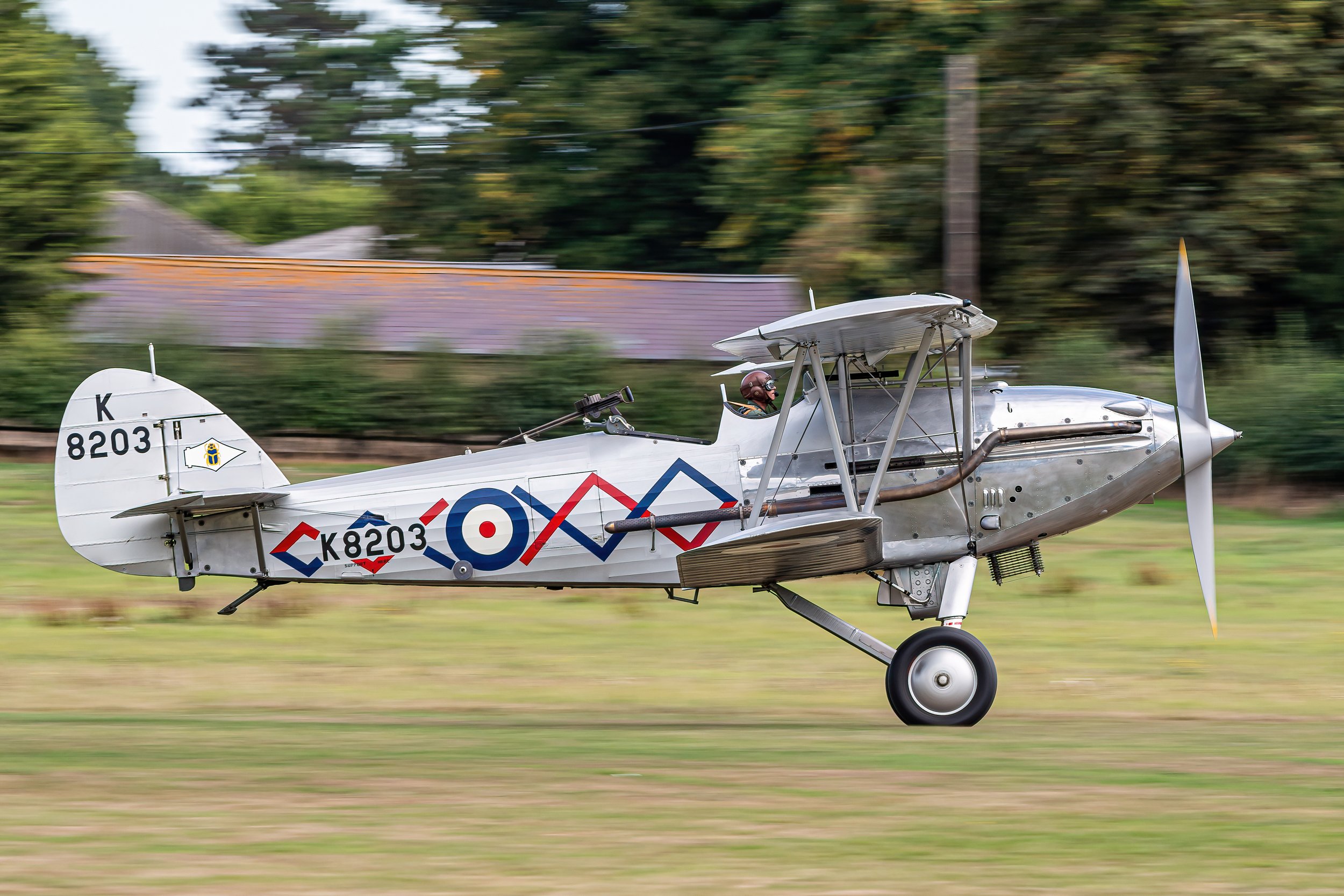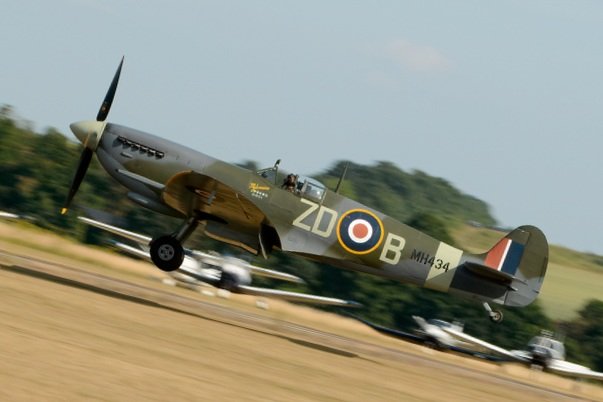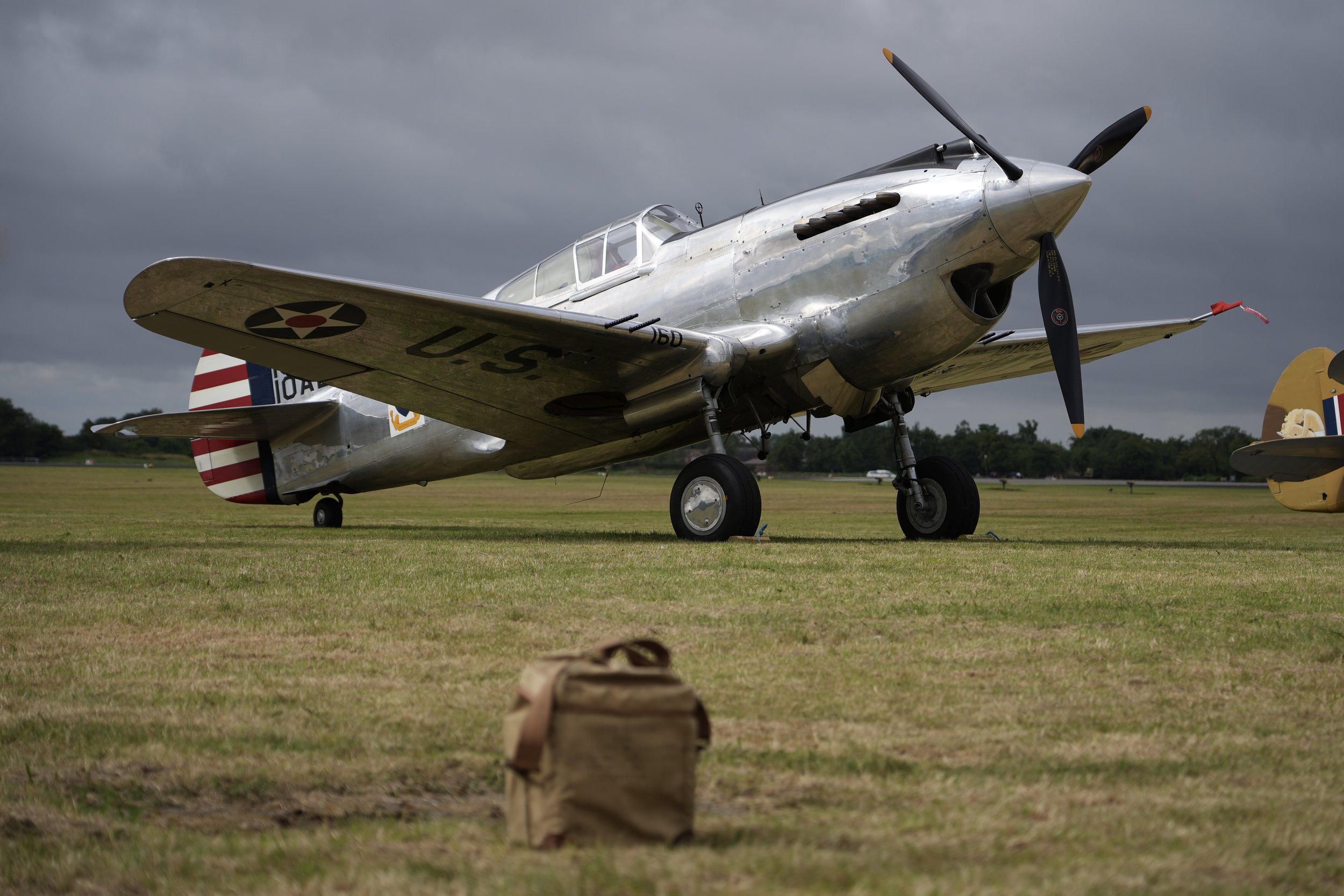Spitfire P7350
Year built
1940
Aircraft
Spitfire IIA
Base
RAF Coningsby
P7350 is the oldest airworthy Spitfire in the world and the only Spitfire still flying today to have actually fought in the Battle of Britain. She is believed to be the 14th aircraft of 11,989 built at the Castle Bromwich ‘shadow' factory, Birmingham. Entering service in the August of 1940, she flew in the Battle of Britain serving with 266 Squadron and 603 (City of Edinburgh ) AuxAF Squadron. Whilst serving with the latter at Hornchurch, on or about 25 October 1940, she was involved in combat with ME Bf 109s and forced to crash land. She was quickly repaired at No 1 Civilian Repair Unit, Cowley, and flew again on 15 November, only 3 weeks after the crash landing; repaired bullet holes can still be seen on her port wing. She subsequently served operationally with 616 and 64 Squadrons. After April 1942 she was relegated to support duties serving with the Central Gunnery School and 57 OTU and ending her operational career with 19 MU. During the War, ‘P7' suffered three 'Cat B' flying accidents (at Tangmere, Hornchurch and Sutton Bridge). Having survived the War, 'P7' was then sold for scrap to Messrs. John Dale Ltd in 1948 for the princely sum of £25; fortunately, the historical significance of the aircraft was recognised and she was generously presented to the RAF museum at Colerne. Restored to flying conditions in 1968 for the epic film 'The Battle of Britain', she was presented to the BBMF after filming was completed.
| Back to Top |
Supermarine Spitfire IIA
The Supermarine Spitfire is a British single-seat fighter aircraft that was used by the Royal Air Force and other Allied countries before, during, and after World War II. Many variants of the Spitfire were built, using several wing configurations, and it was produced in greater numbers than any other British aircraft. It was also the only British fighter produced continuously throughout the war. The Spitfire continues to be popular among enthusiasts; nearly 60 remain airworthy, and many more are static exhibits in aviation museums throughout the world.
The Spitfire was designed as a short-range, high-performance interceptor aircraft by R. J. Mitchell, chief designer at Supermarine Aviation Works, which operated as a subsidiary of Vickers-Armstrong from 1928. Mitchell pushed the Spitfire's distinctive elliptical wing with cutting-edge sunken rivets (designed by Beverley Shenstone) to have the thinnest possible cross-section, helping give the aircraft a higher top speed than several contemporary fighters, including the Hawker Hurricane. Mitchell continued to refine the design until his death in 1937, whereupon his colleague Joseph Smith took over as chief designer, overseeing the Spitfire's development throughout its multitude of variants.
During the Battle of Britain, from July to October 1940, the public perceived the Spitfire to be the main RAF fighter, though the more numerous Hurricane shouldered a greater proportion of the burden against Nazi Germany's air force, the Luftwaffe. However, Spitfire units had a lower attrition rate and a higher victory-to-loss ratio than those flying Hurricanes because of Spitfire's higher performance. During the battle, Spitfires were generally tasked with engaging Luftwaffe fighters—mainly Messerschmitt Bf 109E-series aircraft, which were a close match for them.
After the Battle of Britain, the Spitfire superseded the Hurricane to become the backbone of RAF Fighter Command, and saw action in the European, Mediterranean, Pacific, and South-East Asian theatres. Much loved by its pilots, the Spitfire served in several roles, including interceptor, photo-reconnaissance, fighter-bomber, and trainer, and it continued to serve in these roles until the 1950s. The Seafire was a carrier-based adaptation of the Spitfire that served in the Fleet Air Arm from 1942 through to the mid-1950s. Although the original airframe was designed to be powered by a Rolls-Royce Merlin engine producing 1,030 hp (768 kW), it was strong enough and adaptable enough to use increasingly powerful Merlins and, in later marks, Rolls-Royce Griffon engines producing up to 2,340 hp (1,745 kW). As a result, the Spitfire's performance and capabilities improved over the course of its service life.
The Spitfire Mk II differed from late production Mk Is in two ways. The aircraft itself used the Merlin XII engine, providing 1,150 hp, an increase of 120 hp over the engines used in the Mk I. This engine could be used with either the de Havilland or Rotol propellers. The second main difference is that while the Mk I was built by Supermarine at Southampton, the Mk II was produced in a new giant factory at Castle Bromwich.
920 Mk IIs were built. Of them, the majority (750) were Mk IIas, with eight .303 Browning machine guns while 170 were Mk IIbs, with two 20mm cannon and four .303 machine guns. The Mk II appeared in time to take part in the battle of Britain. Both the Mk I and Mk II were phased out in 1941 in favour of the Mk V.
| Back to Top |

| Back to Top |

































